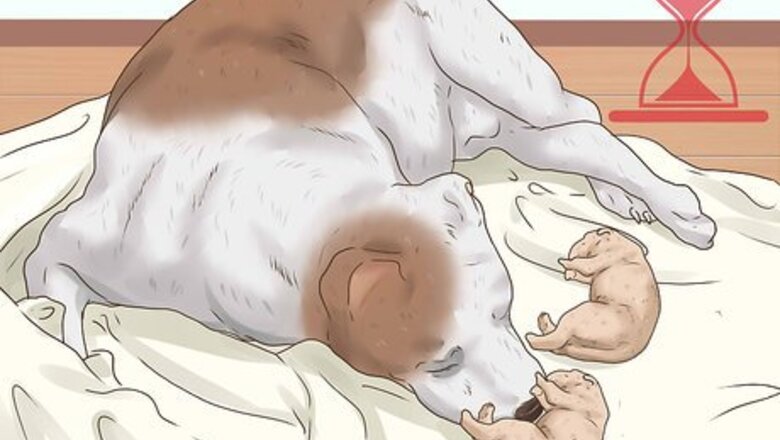
views
Managing Stillborn Puppies

Allow the mother to spend some time with the dead puppies. Although it might seem a little morbid to leave the dead animals in with the mother and any surviving pups, removing the dead puppies might agitate the mother. She knows how many puppies she delivered and removing the dead ones may make her frantically start looking for her pups. Instead, leave the dead pups in with the mother for a while. Eventually, she will realize they are dead, allowing you to remove them without causing her distress. Once the dead puppy’s body cools, the mother will likely notice that it is dead. If the mother is still trying to care for any dead pups after a few days, be sure to remove them even if it causes the mother distress. Parasites from the decaying carcasses can be passed on to the mother and the remaining pups. If the mother or surviving pups seem ill in any way, remove the dead puppies immediately. You do not want a parasite taking advantage of their weakened immune systems.
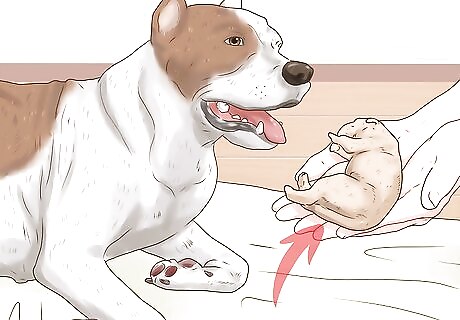
Remove the dead animals. After you allow the mother some time to notice that the puppies are dead, remove them from the rest of the litter. It may be best to remove the dead animals while the mother is not looking to prevent unnecessary agitation. You should use a paper towel or rubber glove to grab the carcasses so that you do not infect yourself with any parasites from the decomposing animals.
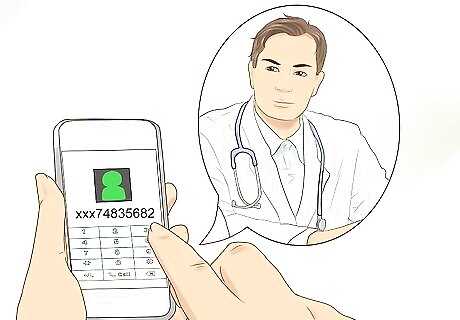
Contact your veterinarian. Once you remove the dead animals, put them in a freezer bag and place them in the freezer. You should then contact your veterinarian about having the dead animals tested. It is important that you find out if the other litter members are at risk or if the mother has some health issue that may prevent her from breeding again. If you have the placenta, include that with the dead puppies.
Disposing of Dead Puppies
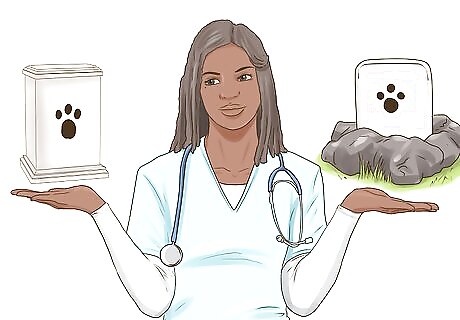
Let the veterinarian dispose of them. If you send the carcasses to the veterinarian for testing, they will dispose of the deceased animals after they perform their tests on them. Depending on their facilities, they may incinerate or bury the animals. You may also request the remains if you want to dispose of the animals yourself. Typically, the vet will dispose of any dead animals for free after performing a necropsy.
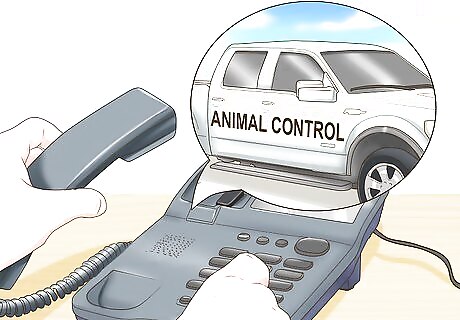
Contact animal control. If you do not contact your veterinarian and are unsure about how to dispose the dead animals, call your local animal control. They will help you determine the best way of disposing of the carcasses. You can also take the dead puppies to your local animal services center and see if they will dispose of them for you.
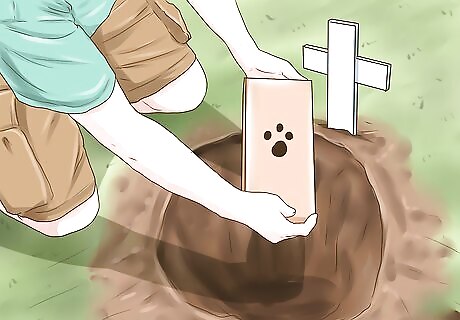
Bury your puppies. In most places, you can bury deceased animals on your own property. If you have small children, you may want to have a small burial ceremony to help them deal with the death. For something as small as a puppy, a shoebox should work as a coffin. You should bury the dead animal at least two feet (61 cm) deep to prevent scavengers from digging it up. Be sure to find out what your local rules and regulations are before burying the deceased animals. You may also want to explore the option of burying the animals in a pet cemetery. If you feel particularly attached to the dead puppies, you can also look into having them cremated and keeping their ashes in an urn.
Dealing with the Loss

Cope with the grief. The death of puppies can be a difficult event to manage emotionally. You may experience sadness, anger, or even denial that the puppies passed away. Acknowledging these emotions and expressing them, as opposed to suppressing them and acting as if they are not there, will help you address and eventually deal with your sadness. In order to address your grief, you might consider joining a pet-loss support group. You might also write about your loss in a journal or visit a mental health professional to deal with your grief.
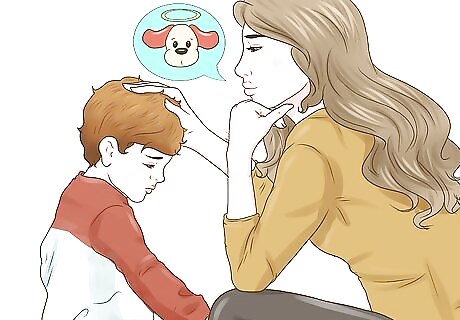
Explain what happened. If you have children, it is important that your talk with them about the death of the puppy or puppies. Explain to them that this is a normal and natural occurrence and that many young animals do not survive infancy. Because your children will likely have been very excited about the arrival of puppies, you should prepare yourself for them to be very sad and disappointed. To avoid your child feeling betrayed, tell them about the death of the puppies right away. Once you get the necropsy report back from the vet, you may want to let your child know what caused the puppies’ death. Say something like “I know that it’s sad, but this is a natural part of life.” You might break the news to your children by saying something like “I have some bad news about the puppies” or “There’s something I need to tell you about the puppies.”
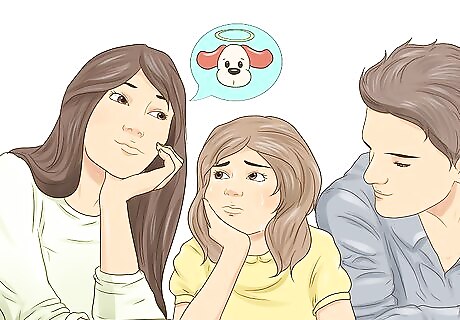
Comfort your grieving family members. Listen to your child’s questions about the loss of the puppies and be sure to give them answers that are appropriate and do not traumatize them. Let them know that it is okay to be sad and that disappointment is a normal feeling in this situation. Finally, be on the lookout for signs that your child is struggling with the grief. Talk to your child if they have difficulty sleeping, seem constantly sad, or have a hard time in school. Seeing a dead animal for the first time, especially if they are the puppies of your family’s pet dog, may be traumatic for your children. Try to comfort them by saying things like “At least the puppies didn’t experience any pain” or “This is nobody’s fault. These things happen sometimes.”
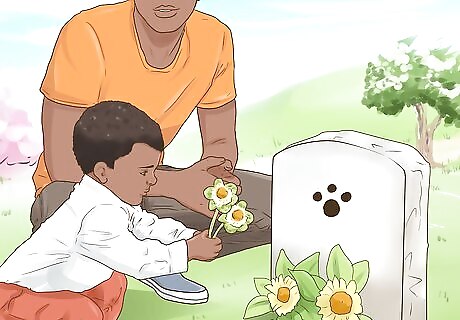
Remember your pet. Give yourself and your family the opportunity to express their grief and remember your pets through a ceremony or tribute. You can hold a burial ceremony in your backyard or plant a special tree or flower to remember the puppies. You can ask your child to help you in the planning of the ceremony or talk about ways that they would like to pay tribute to the animals.
Preventing the Death of Puppies during Birth
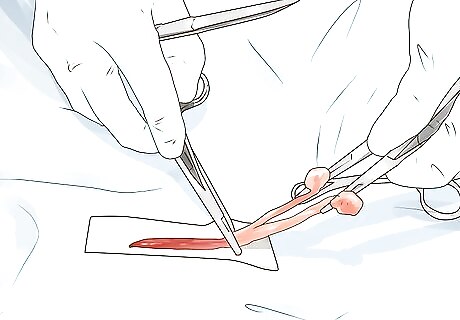
Spay your dog. The best way to prevent stillborn puppies or death in infancy is to spay your dog. This is particularly true if your dog has lost puppies in previous pregnancies. Unless you are a professional dog breeder, you should have your dog spayed before its first heat, which is usually around 5 to 6 months of age. Young dogs that become pregnant are more likely to miscarry and have stillborn puppies. They are also less likely to be able to properly care for their puppies and meet their nutritional needs.

Visit your veterinarian. If you want to breed your dog, you should visit your veterinarian to make sure that your dog is healthy enough to deliver puppies successfully. Many dogs suffer from genetic problems that make healthy delivery of puppies difficult. If your dog is pregnant, you should set up regular veterinary checkups to make sure that the pregnancy is progressing normally. Although it will not eliminate it, working with a veterinarian will limit the likelihood of stillborn puppies. You should also contact your veterinarian if any complications arise during your dog’s labor.
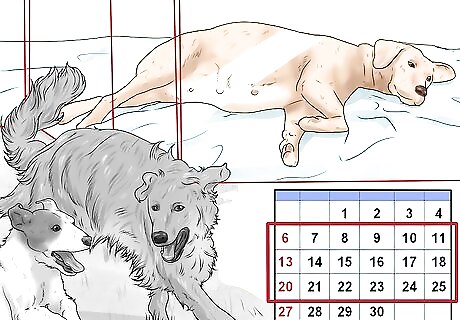
Isolate the mother for three weeks before delivery. One of the leading causes of stillborn puppies is a herpes infection. If the mother is infected while pregnant, she will likely lose the entire litter. To avoid this, you should isolate the mother from any other dogs for at least the last three weeks of the pregnancy. You should also keep the mother and pups isolated for at least three weeks after the birth. Transmission occurs by direct contact. This includes sexual contact as well as nosing, sniffing, and licking other dogs.
















Comments
0 comment